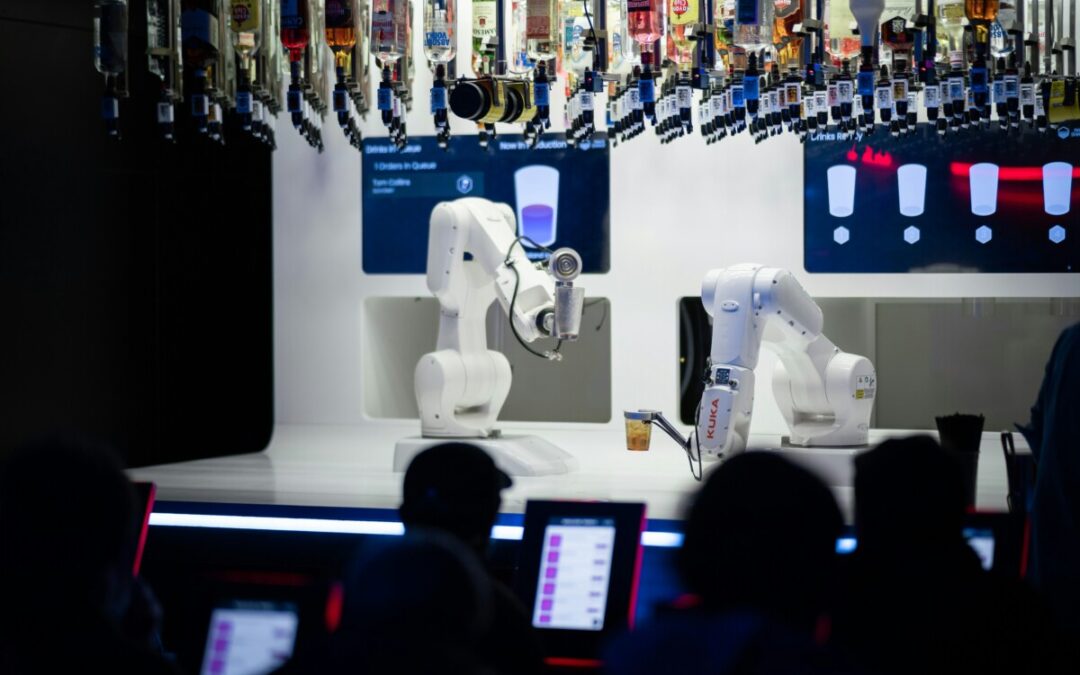What is RPA? Intelligent Robotic Process Automation (RPA) is a type of software that can automate repetitive tasks and processes that are done by humans. The core idea behind RPA is to make the process of automation more intelligent and less costly. It does this by using a software agent to interact with computer systems in order to execute tasks without (or with limited) human interaction.
This article gives an introduction to RPA, its benefits, and how it can be used in the workplace.
The Advantages of RPA over Traditional Process Automation and why you should choose it
Robotic Process Automation (RPA) is a process that uses software to automate the execution of tasks in a business. It is an emerging technology that has been gaining popularity lately because of its many advantages over traditional process automation.
RPA can be used in any industry and it can be applied to any process, which makes it very versatile and applicable to many different situations. This means that you don’t have to spend time and money on training your staff on how to use the software, as they are already familiar with their own processes.
It also means that RPA is easy to integrate into your current system, without having to make major changes or hire new personnel. All you need are simple point-and-click instructions for your employees, which will allow them to get started fairly quickly.
The Essential Features of a Successful and Cost-Effective RPA Project
Robotic process automation (RPA) is a new technology that is transforming business operations. It has been predicted that by the year 2025, an estimated 30% of all organizations will have adopted RPA for at least one business process.
The use of RPA in a company can be very beneficial in terms of costs and efficiency, but it is important to ensure that the implementation is done properly from the start. Here are some essential features of a successful and cost-effective RPA project: The first is customization. Regulated industries, such as healthcare and finance, require special software that will only process data according to their unique requirements. These industries also need regulatory compliance solutions that provide systems that are able to verify government guide lines. The second is integration. Data collection and processing must be integrated in order to ensure data quality, accuracy, and compliance with regulatory requirements. The third is speed. A successful RPA project should be able to provide an effective route for a company’s operations to run effectively without the need for manual labor or expensive resources.RPA may be used to automate tasks such as data management, customer service, and information retrieval
The Benefits and Disadvantages of Intelligent Robotic Process Automation
The benefits of Intelligent Robotic Process Automation are that it can free up time for employees to focus on more important tasks, improve operational efficiency, and reduce labor costs.
Robotic process automation (RPA) is the automation of an organization’s existing information-processing tasks, which are typically performed by humans, to make the organization more efficient. RPA is often characterized as low-cost and low-risk solution that can deliver quick results.
The disadvantages of Intelligent Robotic Process Automation are that it can have a negative impact on the company culture, lead to a lack of human interaction, and cause the loss of jobs. . One disadvantage is that it can fail to identify human errors and create new ones. Another major problem is that it may not be able to deal with errors in the business logic and will often crash or stop working.
Why You Should Consider Investing in an Intelligent Robotic Process Automation Solution for Your Enterprise?
The latest trend in the enterprise world is the introduction of Intelligent Robotic Process Automation solutions. They have been designed to provide the enterprises with a variety of benefits, including:
– Improved customer experience
– Increased efficiency
– Reduced operational costs
– Enhanced compliance
3 Key Features You Must Have on Your Intelligent Robotic Process Automation Software To Ensure Success?
RPA software is the next big thing in automation. It is a great way to make your business more efficient and productive. But not all RPA software are the same. There are a few features that you must have on your RPA software for it to work for you.
1) Scalability: The RPA software should be able to scale up or down based on the needs of the business. This will help ensure that resources are always available at any moment, no matter how many employees or machines there are in a company.
2) Customizable: The ability to customize your RPA application will allow you to optimize it for your specific needs, which will lead to increased efficiency and productivity over time.
3) Integration: The ability of integration of an RPA application is vital for the success of an organisation. They can help transform a company’s IT systems, create efficiencies and provide employees with better access to their data.
RPA and the Future of the World’s Workforce
The use of robots in the workplace has increased dramatically in the last few years. This is a result of the increasing availability and affordability of robotics technology, as well as its broadening applications. Robots are now being used to perform a variety of tasks, including those that were once considered too dangerous or difficult for humans to do. .Moreover, job losses in manufacturing, transportation, and financial services are leading to the creation of many new jobs in other industries. In order to meet the labor demand for these new jobs, people need more skills and training. This is where robotics enters the picture. It’s estimated that by 2035 there will be 1 billion robots at work.
ERP vs CRM: Key Differences, Strengths, and How Clavis’ ERP Drives Organizational Success
In the digital age, businesses strive to leverage advanced tools to streamline operations, boost productivity, and foster better customer relationships. Two pivotal software solutions that play a significant role in achieving these goals are Enterprise Resource Planning (ERP) and Customer Relationship Management (CRM) systems. While these tools may seem similar at first glance, they serve distinct purposes and offer unique benefits, and it is important to understand why you may need one or the other—or both in tandem.
1. What is ERP?
ERP stands for Enterprise Resource Planning, a comprehensive software suite that manages and integrates core business processes. These processes often include:
- Finance and accounting
- Human resources
- Supply chain management
- Inventory and order management
- Manufacturing
ERP systems centralise business data, allowing various departments to collaborate seamlessly and make informed decisions based on real-time insights.
Core Features of ERP Systems
- Centralized Data Management: Consolidates information from all business departments into one platform.
- Process Automation: Automates repetitive tasks to improve efficiency.
- Scalability: Can grow with your business, accommodating new functionalities as needed.
- Compliance Support: Helps organisations meet regulatory requirements.
- Advanced Analytics: Provides detailed insights to support strategic decision-making.
2. What is CRM?
CRM, or Customer Relationship Management, is software that focuses on managing a company's interactions with current and potential customers. The primary goal of a CRM system is to improve customer satisfaction, retention, and acquisition through personalised communication and efficient management of sales and marketing activities.
Core Features of CRM Systems
- Contact Management: Maintains detailed records of customer interactions and preferences.
- Sales Pipeline Tracking: Manages leads and monitors the sales process.
- Marketing Automation: Facilitates email campaigns, social media management, and more.
- Customer Support: Enhances post-sale services through ticketing systems and live chats.
- Data-Driven Insights: Helps identify trends to fine-tune marketing and sales strategies.
3. ERP vs. CRM: Key Differences
While ERP and CRM are essential for business success, they cater to different aspects of operations.
|
Feature |
ERP |
CRM |
|
Primary Focus |
Internal processes and operational efficiency |
Customer interactions and relationships |
|
Key Functions |
Accounting, supply chain, HR, inventory |
Sales, marketing, customer service |
|
Target Audience |
Internal stakeholders |
Sales, marketing, and customer support teams |
|
Data Integration |
Focuses on consolidating operational data |
Specialises in customer-centric data |
|
Scalability |
Enterprise-wide |
Primarily focused on customer management |
4. The Strengths of ERP Systems
ERP systems are the backbone of operational efficiency. Their key strengths include:
- Holistic Business View: ERP provides a comprehensive view of business operations by integrating data across departments.
- Cost Reduction: Automating processes reduces manual labour and errors, saving time and money.
- Improved Compliance: Centralized data simplifies regulatory reporting and ensures adherence to standards.
- Inventory Optimization: Enhances inventory management, reducing waste and ensuring timely procurement.
- Agile Decision-Making: Real-time data insights help leaders make swift, informed decisions.
5. The Strengths of CRM Systems
CRM systems shine in the realm of customer relationship management, with benefits such as:
- Enhanced Customer Insights: Tracks and analyses customer preferences to tailor interactions.
- Improved Customer Retention: Personalization and timely communication foster loyalty.
- Streamlined Sales Processes: Automates lead management, reducing manual intervention.
- Marketing Optimization: Helps segment audiences for targeted campaigns.
- Boosted Collaboration: Facilitates alignment between sales and marketing teams.
6. ERP and CRM: Complementary Tools
Though distinct, ERP and CRM systems are complementary and often integrated to deliver maximum value. For instance:
- CRM manages the front-end relationship with customers, while ERP handles back-end processes like inventory and order fulfilment.
- Together, they provide a seamless flow of information, ensuring that customer-facing teams have accurate, up-to-date data on orders and services.
7. Clavis' ERP: The Ultimate Solution for Organizational Success
Clavis' ERP stands out as a robust ERP solution designed to address the multifaceted needs of modern businesses. Here’s how it can drive your organisation's success:
a) Comprehensive Integration
Clavis' ERP integrates seamlessly with existing systems, including CRM platforms, to unify your business processes.
b) Real-Time Data Analytics
With Clavis' ERP, decision-makers can access advanced analytics tools that offer actionable insights into performance, trends, and potential opportunities.
c) Tailored Functionality
Highly customisable to suit the unique needs of businesses across industries, Clavis' ERP works for all—from manufacturing to retail and more.
d) Enhanced User Experience
The platform boasts an intuitive interface, making it easy for employees to adopt and use effectively.
e) Cloud Capabilities
Leverage cloud-based deployment for flexibility, scalability, and cost savings.
9. Choosing the Right Solution for Your Business
When deciding between ERP and CRM—or opting for an integrated approach—consider the following:
- Business Goals: Identify whether your primary focus is operational efficiency (ERP) or customer relationships (CRM).
- Scalability: Choose a solution that can grow with your business.
- Budget: Evaluate the total cost of ownership, including deployment and maintenance.
- Customization: Ensure the platform can be tailored to your specific needs.
Final Thoughts
ERP and CRM systems are indispensable for businesses aiming to optimise operations and enhance customer relationships. While they serve distinct purposes, their integration offers unparalleled value. With Clavis' ERP, you gain a robust tool that streamlines your operations and integrates seamlessly with CRM systems to provide a holistic business solution.
Some other posts you might be interested in.

AI + RPA: The Ultimate Duo to Scale Your Business Faster and Smarter
Scaling a business isn’t just about doing more—it’s about doing more intelligently. As digital transformation redefines the modern enterprise, two technologies have emerged as transformative powerhouses: Artificial Intelligence (AI) and Robotic Process Automation...

Effortless and Effective Digital Signage for Every Organization with Clavisign
Explore how digital signage from Clavisign is transforming business communication and engagement.

15 Applications of Blockchain in Healthcare
"Blockchain" refers to a shared irreversible record of a chain of transactions, each of which is made up of one block, and which is held together by cryptographic keys ("hashes"). These keys or signatures are maintained in shared ledgers and connected by a network of...
